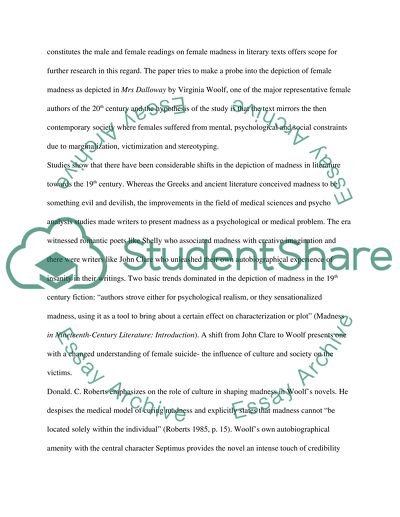Cite this document
(Depictions of Female Madness in Contemporary Literature Book Report/Review, n.d.)
Depictions of Female Madness in Contemporary Literature Book Report/Review. https://studentshare.org/literature/1550100-an-inquiry-into-depictions-of-female-madness-in-contemporary-literaturefilm
Depictions of Female Madness in Contemporary Literature Book Report/Review. https://studentshare.org/literature/1550100-an-inquiry-into-depictions-of-female-madness-in-contemporary-literaturefilm
(Depictions of Female Madness in Contemporary Literature Book Report/Review)
Depictions of Female Madness in Contemporary Literature Book Report/Review. https://studentshare.org/literature/1550100-an-inquiry-into-depictions-of-female-madness-in-contemporary-literaturefilm.
Depictions of Female Madness in Contemporary Literature Book Report/Review. https://studentshare.org/literature/1550100-an-inquiry-into-depictions-of-female-madness-in-contemporary-literaturefilm.
“Depictions of Female Madness in Contemporary Literature Book Report/Review”. https://studentshare.org/literature/1550100-an-inquiry-into-depictions-of-female-madness-in-contemporary-literaturefilm.


